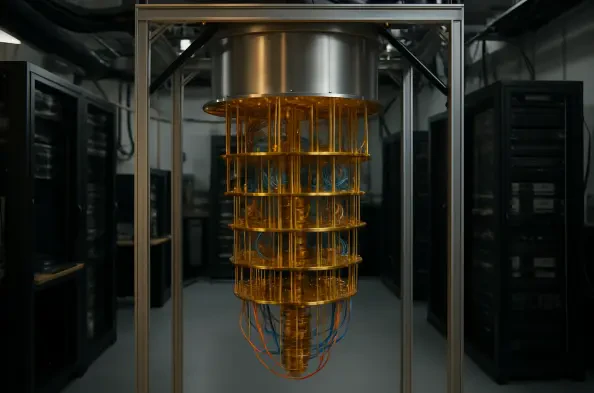Today, we’re thrilled to sit down with Vernon Yai, a renowned data protection expert with a deep understanding of privacy and governance in cutting-edge fields like quantum computing. With his extensive background in risk management and innovative prevention techniques, Vernon offers a unique perspective on how emerging technologies intersect with security and state-led initiatives. In this interview, we’ll explore the transformative potential of quantum computing, New Mexico’s bold $315 million investment in this field, and the strategic advantages the state brings to the table. We’ll also dive into the challenges of balancing speed with caution, the importance of fostering collaboration between scientists and entrepreneurs, and what this could mean for the future of technology and data protection.
Can you break down what quantum computing is in a way that’s easy to grasp for someone new to the concept?
Absolutely. Quantum computing is a revolutionary type of computing that uses principles of quantum mechanics—the science of how particles behave at the tiniest scales, like atoms and subatomic particles. Unlike traditional computers, which process information in bits as either 0s or 1s, quantum computers use quantum bits, or qubits, which can represent both 0 and 1 at the same time thanks to a property called superposition. This allows them to perform many calculations simultaneously. It’s a game-changer because it can solve incredibly complex problems—like drug discovery or cryptography—that would take regular computers thousands of years to crack, sometimes in just minutes.
What do you think motivated New Mexico to pour $315 million into quantum computing specifically?
New Mexico’s decision to invest so heavily in quantum computing is rooted in both ambition and history. The state has a legacy of pioneering transformative technologies, dating back to the world’s first atomic bomb tests. This investment signals a desire to be at the forefront of the next big leap in science and tech. Quantum computing isn’t just about faster processing; it’s about unlocking solutions to global challenges in security, healthcare, and energy. For New Mexico, it’s also about economic growth—creating high-tech jobs and positioning the state as a hub for innovation in a field that could redefine industries.
What unique strengths does New Mexico bring to the table that could make it a leader in this space?
New Mexico has a lot going for it. First, there’s a wealth of scientific talent, thanks to the presence of two U.S. National Labs and a branch of the U.S. Air Force Research Lab. That’s a huge pool of expertise to draw from. Then you’ve got practical advantages like affordable land and energy, which are critical for building the infrastructure needed for quantum research and businesses. These factors make it easier to attract companies and startups compared to pricier tech hubs. The existing research facilities also provide a strong foundation for collaboration and innovation, giving the state a real edge.
How is this $315 million investment being allocated to push quantum computing forward?
The investment is spread across several key areas. A big chunk, $185 million from the state’s sovereign wealth fund, is going to venture capital firms to support quantum businesses that set up shop in New Mexico. There’s also funding for private companies, as well as for building fabrication facilities and infrastructure like a quantum network. Additionally, $60 million from both the state and a federal defense research agency will help evaluate and prepare projects for commercial success. The goal is to create a robust ecosystem—everything from research to real-world applications.
Can you explain the significance of the quantum network being developed in Albuquerque?
The quantum network in Albuquerque is a critical piece of this puzzle. It’s designed to connect various labs, research facilities, and businesses around a central hub, enabling secure and rapid communication of quantum data. Think of it as a specialized internet for quantum tech, allowing for collaboration and testing of quantum systems in real time. It’s expected to be operational by mid-next year, which could accelerate the development of practical quantum applications and position the state as a testing ground for this tech on a national level.
Governor Lujan Grisham emphasized balancing speed with caution in this initiative. How can the state achieve that?
Striking that balance is tricky but essential. Moving fast means seizing the moment to establish leadership in a competitive field, but it can’t come at the expense of due diligence. The state can achieve this by setting clear criteria for funding—prioritizing projects with strong potential for impact and viability. Partnering with federal agencies for vetting projects is a smart move, as it adds a layer of oversight. Regular progress reviews and transparent reporting can also help ensure the investment isn’t squandered while still maintaining momentum.
There’s a $25 million program to connect scientists with entrepreneurs. Why is this collaboration so vital for quantum computing?
This is a brilliant idea because innovation doesn’t just happen in a lab—it needs a path to the marketplace. Scientists often have groundbreaking ideas but may lack the business acumen to turn them into viable products. Entrepreneurs bring that practical know-how, along with an understanding of market needs. Pairing them creates stronger founding teams for startups, bridging the gap between discovery and commercialization. In a field as complex as quantum computing, where applications are still emerging, this kind of teamwork is crucial for success.
How do you see New Mexico stacking up against tech giants in the race for quantum computing dominance?
Competing with tech giants is no small feat, but New Mexico has some unique angles. Unlike large corporations that often focus on broad, global markets, the state can carve out a niche by leveraging its research infrastructure and fostering a tight-knit ecosystem of innovation. State-backed funding and partnerships with federal labs give it credibility and resources that many startups lack. By focusing on specific applications—like quantum security or energy solutions—and building a collaborative hub, New Mexico can attract talent and companies looking for a more focused, supportive environment.
What’s your forecast for the future of quantum computing in New Mexico over the next decade?
I’m optimistic about New Mexico’s trajectory. If the state can execute this vision—building the infrastructure, nurturing startups, and maintaining strong partnerships—I think it could become a recognized leader in quantum computing within the next ten years. We might see breakthroughs in secure communications or advanced simulations coming out of this hub, especially with the quantum network in place. The bigger question is how quickly these technologies will scale commercially, but with this level of investment and focus, New Mexico is well-positioned to play a major role in shaping the quantum era.






